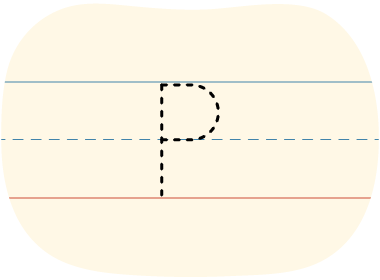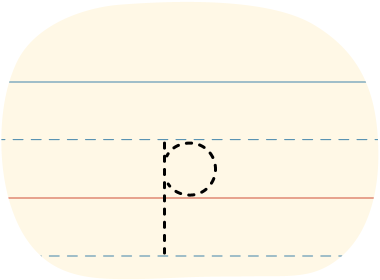The Letters P, p to T, t
Transferable skills
Curriculum expectations
Transferable skills
Receptive and Expressive Communication
A1.1 identify how transferable skills can be used to support communication in various cultural, social, linguistic, and domain-specific contexts, and apply them when reading, listening to, viewing, and creating texts of various forms.
Student Agency and Engagement
A1.2 demonstrate an understanding of how transferable skills help them to express their voice and be engaged in their learning.
Oral and Non-Verbal Communication
Oral and Non-Verbal Communication Strategies
B1.4 identify and use oral and non-verbal communication strategies, including expression, gestures, and body language, to interpret or contribute to the meaning of messages
Language foundations for reading and writing
Alphabet knowledge
B2.2 name and form the upper- and lowercase letters both in and out of order and demonstrate knowledge of alphabetic order, with automaticity.
Vocabulary
B2.7 demonstrate an understanding of commonly used words, acquire and use explicitly taught vocabulary in various contexts, including other subject areas, and use their developing morphological knowledge to analyze and understand new words.
In the previous learning activities, we learned about uppercase and lowercase letters P, p to T, t.
Note: The letters in the following images are written in different styles.

Match the letters!
As explored in the previous images, there is an uppercase and lowercase form for each letter.
Let's try matching the pairs of letters. For each of the following uppercase letters, choose the matching lowercase letter.
Words around us!
Let's explore some words that start with the letters from P, p to T, t.
Think and share!
Can you think of other words that start with uppercase or lowercase letters? If you have a classmate close by, share your thoughts with them.
How are letters formed?

Letters are formed with different lines. Letters can be formed with:
- straight lines only
- curved lines only
- a mix of straight and curved lines
Press the following tabs to explore how letters P, p to T, t are formed. Press the play button to explore how each letter is formed in uppercase and lowercase.

Uppercase

Lowercase

Uppercase

Lowercase

Uppercase

Lowercase

Uppercase

Lowercase

Uppercase

Lowercase
Sort the letters!
We've explored how uppercase and lowercase letters are formed. Now, let's sort some letters by thinking about the lines that are used to form them.
Which letters are formed with straight lines only? Which are formed with curved lines only? Which are formed with a mix of straight and curved lines?
Did you know?
American Sign Language (ASL)
In ASL, letters are formed using hand, face, and body movements. There is a sign for each letter of the alphabet. Forming a letter is called signing.

The letters P, p to T, t in ASL
Alphabetic order
There are 26 letters in the alphabet. When the letters are placed in a specific sequence, it is called alphabetic order.
Press the following tabs to explore uppercase and lowercase letters in alphabetic order.

The letters of the alphabet

The letters of the alphabet
Place the letters!
Let’s try placing the following lowercase letters in alphabetic order.
Use the following ten frame and stickers, or another method of your choice to help place the letters in the correct sequence.
Press Check Answer to see how you did.

Note: Lowercase letters p and q can be confused because they are similar. It can be helpful to review how each letter is formed.
What letters are missing?
We've explored alphabetic order in uppercase and lowercase. Now, let's try finding the missing letter that completes each sequence.
For each of the following sequences of letters, choose the missing letter.
Reflection
How do you feel about what you have learned in this activity? Press the button next to the sentences that best match how you feel.
I feel...
Press ‘Discover More’ to extend your skills.
Discover MoreCompare the letters!
We’ve explored many letters. What is the same about some letters? What is different?
If you would like, you can use the following document to explore your ideas. You may colour, trace, or use another method of your choice to explore what is similar and different about the letters.
 Press the ‘Activity’ button to access Compare the Letters!
Press the ‘Activity’ button to access Compare the Letters!